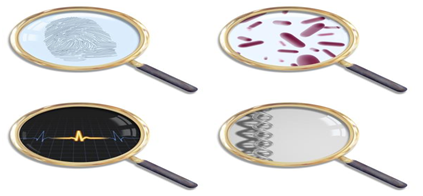Identification Of Bacteria
Bacteria constitute a huge domain of prokaryotic microorganisms. Classically a few micro metres in length bacteria have a broad range of shapes ranging from spheres to spirals and rods. The Bacteria were between the first life forms to appear on Earth and are present in most habitats on the planet, acidic hot springs, growing in soil, radioactive waste and deep in the Earth's crust as well as in organic matter and the live bodies of animals and plants providing outstanding examples of mutualism in the digestive tracts of cockroaches and humans termites.
There are typically 40 million bacterial cells in a gram of a million and soil bacterial cells in a millilitre of fresh water in all there are approximately five nonillion bacteria on Earth forming a biomass which exceeds that of all animals and plants. The Bacteria are vital in recycling nutrients, with several steps in nutrient cycles depending on these organisms like as the fixation of nitrogen from the putrefaction and atmosphere. In the biological communities surrounding cold seeps and hydrothermal vents, bacteria give the nutrients required to sustain life through converting dissolved compounds like as hydrogen supplied and methane. Most bacteria have not been characterized and only about half of the phyla of bacteria have species which can be grown in the laboratory. Study of bacteria is known as bacteriology a branch of microbiology.

While molecular techniques are becoming increasingly dominant in the classification and identification of bacteria most identification work in clinical laboratories throughout the world is done using cheaper biochemical and growth techniques. Furthermore a full identification of any bacterium to publishable standard should include a polyphasic approach, example for including the characteristics of the strain determined molecularly, biochemically and from growth studies. If bacteria can be grown from an environmental or clinical sample the first step in classification or identification are growth studies followed through an analysis of the enzymes which may be present in the strain and lastly a molecular analysis of the genome.